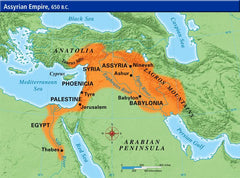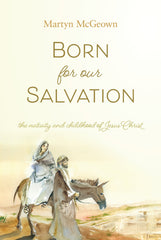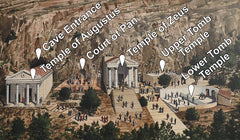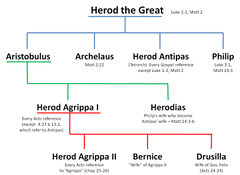Your cart is empty now.

Third Year
In preparation for writing this post I sat back and tried to think about the things that made the third year of seminary distinct from the other years, and I have concluded that part of my challenge now relates to the fact that third year was very similar to second year. The first year of seminary is distinct in my mind as the time when everything was exciting because it was the beginning—everything was new. I distinguish second year as the proving grounds, when we were first introduced to practice preaching and began our regular, weekly cycle of writing exegesis papers. But from many points of view, third year was simply a continuation of second year, with the exception that now many of us were or would soon be licensed to speak a word of edification in the congregations (a significant landmark in our training upon which I reflected in my previous post). During our third year we continued practice preaching, we continued our regular coursework, and we continued to write exegesis papers regularly.
Our course work for third year consisted of the following:
In the Fall semester, we took classes on Poimenics, Old Testament History, New Testament History, Dogmatics (Christology), History of Dogma, and Old Testament Exegesis. The word “Poimenics” comes from the Greek verb “to shepherd; tend to the flock,” which provides a clue to the course material, which concerns such things as family visitation, pastoral counseling, conducting funerals and weddings, and so on.
In between the two semesters we took a two-week Interim course on Reformed Covenantal Ethics, taught by Professor Gritters. Then we plunged into the Spring semester and the following classes: Reformed Symbols, Dogmatics (Soteriology), New Testament History, Missions, Old Testament Isagogics, and New Testament Exegesis. Reformed Symbols is the study of the Reformed confessions, this time focusing on the Heidelberg Catechism and the Belgic Confession. The word “Isagogics” comes from the Greek that means “to lead into,” which again indicates the subject matter of the course, which introduces each book of the Old Testament especially by examining the main theme(s) of the books.
Each of these classes requires reading, most of them require writing, and all of them require diligence. The student who works hard in his courses is rewarded with greater knowledge and understanding in the scriptures, which is a tremendous blessing!
Though in many respects third year was similar to second year, it was in part the sameness and regularity of it that made third year such an enjoyable year of seminary. Along with the similarity, regularity, and development in our coursework came similarity, regularity, and development in our relationships.
I am very thankful to God for the opportunity I had to go through seminary with a large class. Of course, seminary work requires initiative, hard work, and growth of the individual student—he must face each text that he is required to exegete, he must take each test alone, he must do his own reading. If the student relies only on the insights of others, the danger necessarily arises that he sinfully fails to do his own work and violates his own conscience. Nevertheless, when several students regularly face the same texts together, take the same courses, and read the same material, they cannot help but discuss the various challenges they face and the insights the Spirit gives them. Far from being detrimental, I believe God used this interaction in powerful ways to shape each one of us for our calling. “Iron sharpeneth iron; so a man sharpeneth the countenance of a friend” (Prov. 27:17). So, on Friday noon when we fired up the grill for our weekly brat lunch (a long-standing seminary tradition), several of us would discuss some matter that came up in class that day, or the text we had all studied for exegesis that week, or any other matter that struck our interest at the time. Sometimes discussion would spring up spontaneously during the afternoons in the libraries—sometimes these discussions would go on for too long, with the unfortunate result that some of us were forced to forgo sleep in order to get our daily work finished. I have many fond memories of my classmates, and I thank God for the friendship and ability to cooperate with each other that we all now enjoy. May the Lord grant that these friendships continue long into the future now that we no longer spend regular time together in the same building.
In addition to my large class of third years, this particular year of seminary included the addition of three first year students. Three more students meant three more minds to contribute in our discussions and three more hands to hold three more ping pong paddles after lunch every day. Naturally as upper classmen we considered it our duty to inform the new students about the “horrors” of seminary, but we were easily seen through. Now these three students are in their third year, and I very much hope the experience is as wholesome and beneficial as it was for me.
One final incident that contributed to the uniqueness of third year was our January trip to southern California. Every so often the seminary makes a trip in order to attend a theological conference put on by Westminster Seminary California (or Westminster West) in Escondido, roughly twenty miles north of San Diego. All the seminarians with Professor Cammenga flew to California for an extended weekend stay which provided a nice opportunity for fellowship and interaction with our Hope PR Church in Redlands, CA. We spent some time sight-seeing in San Diego, attended the conference, and worshipped in Redlands on the Lord’s Day. In San Diego we could not resist attempting to “reproduce” an old picture we had seen of a previous seminary class—see the two pictures here for your evaluation regarding how well we did.
Next time, the Lord willing, I intend to reflect a bit on a tremendously important and beneficial aspect of seminary training, namely, the internship.
______________
This article was written by Rev. Joseph Holstege who was recently ordained into the gospel ministry and is now pastor of Zion Protestant Reformed Church, in Hudsonville, Michigan.
The content of the article above is the sole responsibility of the article author. This article does not necessarily reflect the opinions and beliefs of the Reformed Free Publishing staff or Association, and the article author does not speak for the RFPA.

Donate
Your contributions make it possible for us to reach Christians in more markets and more lands around the world than ever before.
Select Frequency
Enter Amount










